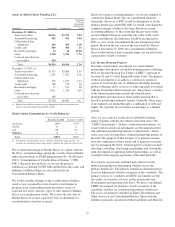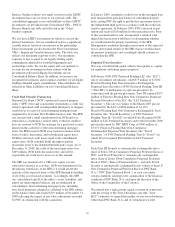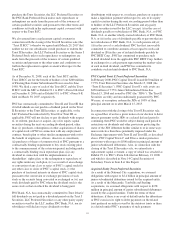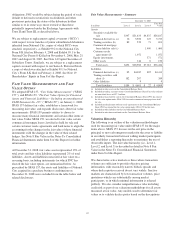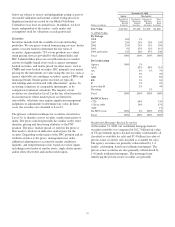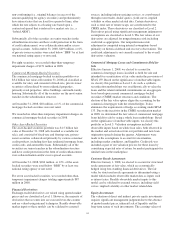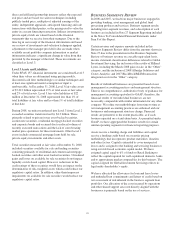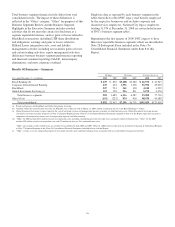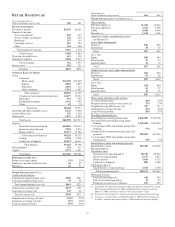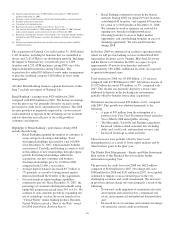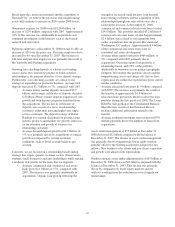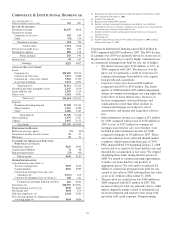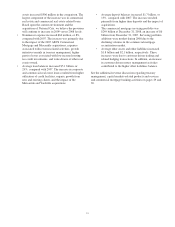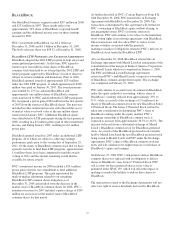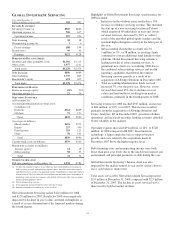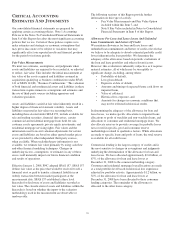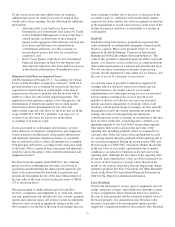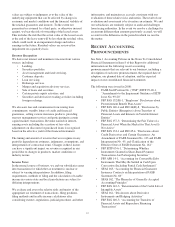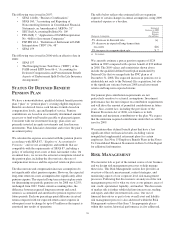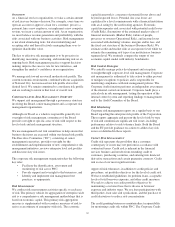PNC Bank 2008 Annual Report Download - page 53
Download and view the complete annual report
Please find page 53 of the 2008 PNC Bank annual report below. You can navigate through the pages in the report by either clicking on the pages listed below, or by using the keyword search tool below to find specific information within the annual report.Based upon the current environment and the acquisition of
National City, we believe the provision and nonperforming
assets will continue to increase in 2009 versus 2008 levels.
Noninterest expense for 2008 totaled $2.284 billion, an
increase of $239 million compared with 2007. Approximately
76% of this increase was attributable to acquisitions and
continued investments in the business such as the branch
network and innovation.
Full-time employees at December 31, 2008 totaled 11,481, an
increase of 459 over the prior year. Part-time employees have
increased by 65 since December 31, 2007. The increase in
full-time and part-time employees was primarily the result of
the Yardville and Sterling acquisitions.
Growing core checking deposits as a lower-cost funding
source and as the cornerstone product to build customer
relationships is the primary objective of our deposit strategy.
Furthermore, core checking accounts are critical to our
strategy of expanding our payments business. Average total
deposits increased $3.7 billion, or 7%, compared with 2007.
• Average money market deposits increased $2.9
billion, and average certificates of deposits declined
$.2 billion. Money market deposits experienced core
growth and both deposit categories benefited from
the acquisitions. The decline in certificates of
deposits was a result of a focus on relationship
customers rather than pursuing higher-rate single
service customers. The deposit strategy of Retail
Banking is to remain disciplined on pricing, target
specific products and markets for growth, and focus
on the retention and growth of balances for
relationship customers.
• Average demand deposit growth of $1.1 billion, or
5%, was primarily driven by acquisitions as organic
growth was impacted by current economic
conditions, such as lower average balances per
account.
Currently, we are focused on a relationship-based lending
strategy that targets specific customer sectors (homeowners,
students, small businesses and auto dealerships) while seeking
a moderate risk profile for the loans that we originate.
• Average commercial and commercial real estate
loans grew $2.1 billion, or 17%, compared with
2007. The increase was primarily attributable to
acquisitions. Organic loan growth reflecting the
strength of increased small business loan demand
from existing customers and the acquisition of new
relationships through our sales efforts was also a
factor in the increase. At December 31, 2008,
commercial and commercial real estate loans totaled
$14.6 billion. This portfolio included $3.2 billion of
commercial real estate loans, of which approximately
$2.4 billion were related to our expansion from
earlier acquisitions into the greater Maryland and
Washington, DC markets. Approximately $.4 billion
of the commercial real estate loans were in
residential real estate development.
• Average home equity loans grew $469 million, or
3%, compared with 2007 primarily due to
acquisitions. Our home equity loan portfolio is
relationship based, with 93% of the portfolio
attributable to borrowers in our primary geographic
footprint. We monitor this portfolio closely and the
nonperforming assets and charge-offs that we have
experienced are within our expectations given current
market conditions.
• Average education loans grew $1.9 billion compared
with 2007. The increase was primarily the result of
the transfer of approximately $1.8 billion of
education loans previously held for sale to the loan
portfolio during the first quarter of 2008. The Loans
Held For Sale portion of the Consolidated Balance
Sheet Review section of this Financial Review
includes additional information related to this
transfer.
• Average residential mortgage loans increased $370
million primarily due to the addition of loans from
acquisitions.
Assets under management of $57 billion at December 31,
2008 decreased $12 billion compared with the balance at
December 31, 2007. The decline in assets under management
was primarily due to comparatively lower equity markets
partially offset by the Sterling acquisition and positive net
inflows. New business sales efforts and new client acquisition
and growth were ahead of our expectations.
Nondiscretionary assets under administration of $87 billion at
December 31, 2008 decreased $25 billion compared with the
balance at December 31, 2007. This decline was primarily
driven by comparatively lower equity markets and net
outflows resulting from the reduction in several significant
relationships.
49


